Sharjah is easily the culture and heritage capital of UAE – with many attractions dating back hundreds of years. Much of the evidences of its rich culture can now be found in its museums – which gives you the choice of indulging in whatever takes your fancy. From traditional souks to very modern shopping malls, it has a wide selection of shopping options as well. A trip to the holiday destination of Sharjah will certainly become an unforgettable experience.

(Image: Google)
The Sharjah Corniche is a big crowd puller. It is more like a heritage area and you still get to see beautiful residences from the 19th century that have been restored authentically using traditional materials such as sea rock, coral and gypsum. Wander aimlessly through this labyrinthine quarter and you will come upon the 1845 Bait al-Naboodah, a former pearl trader’s home, or the electric Souq al-Arsa, the oldest souq in the UAE. Don’t forget to stop by a traditional coffee house for a cuppa and plate of dates.
South of the Khalid Lagoon, popular Qanat al-Qasba is a car-free, lively mix of restaurants, cafes and family-friendly entertainment venues along a canal. Diversions include a Ferris wheel and abra (water taxi) rides.
A short stroll north is the fantastic Sharjah Museum of Islamic Civilization which zeroes in on different aspects of the Islamic faith, scientific accomplishments in the Arab world and 1400 years of Islamic art is enough tot ake your breath away. Don’t miss taking a peek at the central dome with its striking deep-blue zodiac mosaic. What is more, a short drive outside the city there is a whole new aspect of “Sharjah- Holiday” that you may find it hard to believe. This includes a fantastic array of water sports that you can indulge in at Khor Fakkan and how about a canoe ride through the lush mangrove vegetation at Khor Kalba? Yes, we are still talking about Sharjah, the emirate that redefines your idea of an Arabian holiday.
The coast has a long and turbulent history with many archaeological sites dating back to as early as the 2nd millennium BC. In the 16th century the Portuguese took command here, in order to control the spice trade and they built forts in Khor Fakkan, Kalba and Dibba.
East coast activities: Beach fun with banana boat rides, building sand castles, swimming and sunbathing; back to nature with bird watching, hiking trips and nature trails; exploring the heritage sites, canoeing in the mangroves, mountain drives and dhow cruises; deep sea fishing, snorkeling and scuba diving.
LOCAL ATTRACTIONS
Heritage Area
This important ‘historical’ area of Sharjah includes a few restored or reconstructed buildings ussing traditional materials. Located near the Corniche between Burj Avenue and Al-Maraija Road this area has many interesting sights including the Al Hisn Fort, Literature Square with House of Poetry, Sharjah Museum of Islamic Civilization,Sharjah Heritage Museum and Souq al-Arsa. Visitors make a note that most sites in the Heritage Area have opening times set aside solely for women.
Al Hisn Fort
(Ph 065685500; Sat to Thu 8am to 2pm)
The Sharjah Fort Museum dominates the Heritage District. Built in 1820 by Late Sheikh Sultan bin Saqr Al Qasimi the fort was a masterpiece of Arab architecture. The fort itself has been now restored and opened to public as a museum providing a glimpse of social history of the Emirate. Many exhibit signs, however, are solely in Arabic. The house played an important role and had witnessed several social, and the museum provides something of a glimpse at social history of the Emirate. Many exhibit signs, however, are solely in Arabic.
Souq al-Arsah
Located in the Heritage Area and open from 9am, Saturday through Thursday, this souq is definitely worth a visit. Considered to be the oldest and the most popular souq in the country it houses traditional coffeehouses and other interesting sights. Arash (literally meaning courtyard) is really a huge open space in between the residential areas such as Al Naboodah House and Ibrahim Midfa House. The souk is over half a century old and is believed to be a station for a number of commercial ships arriving from different parts of the world for trade.
Sharjah Desert Park
Fifteen minutes from the City Centre on the Al Dhaid road past some fabulous desert scenery the Sharjah Desert Park lends a certain allure to the landscape. The desert park essentialy consists of three components – the Natural History Museum, Arabian Wildlife Centre and the Children’s Farm. The museum provides info about the flora and fauna of the Arabian Desert, the Arabian Wildlife Centre showcases the rich diversity of fauna in the Arabian Peninsula as well as teaching about species which have become extinct while the children’s farm gives the tiny tots a chance to come into close contact with farm animals.
King Faisal Mosque
This magnificent mosque is actually a gift by the King of Saudi Arabia to Sharjah. This massive and architecturally appealing mosque was opened in 1987 and can seat over 15000 devotees. There are separate prayer rooms for men and women and the mosque has an Islamic library with more than 7000 books. Admission however is for Muslims only.
Eye of the Emirates
Soar above the City in Sharjah’s most visible landmark – the 60-meter tall Eye of the Emirates in Al Qasba, the city’s culture entertainment and leisure destination. It is one of the largest and permanent observation wheels in the region. Hop on to the air-conditioned cabins and take in the view of the city dotted with landmark buildings and the surrounding views of the sea. You can see as far as neighbouring Dubai.
Al Jazeera Park
A park right in the middle of Khalid Lagoon, Al Jazeera is a great place to relax and chill out. Its location makes it visually appealing to families looking for something different. The park is full of kids rides, small zoo, barbeque areas and grassy parks. The park is full especially during the cooler months. From the corner of the park you can take in a wide view of the city along the Buheira Corniche.
GET OUTSIDE THE CITY
While the City of Sharjah may have its fair share of attractions, just an hour’s drive away are the city’s “getaway” destinations that includes lovely beaches and mangrove forests along the east coast of Sharjah. Scenically this is one of the most beautiful areas in the UAE with turquoise oases, rocky bays, golden-sand beaches, serene mangroves and impressive mountains. Renowned for its water sports, snorkelling, scuba diving, relaxing and places to explore, this coast creates the ideal break for an overnight stay, either camping or residing in the motels and hotels that line the coast. The journey from Sharjah passes through the rugged scenery of the Al Hajar Mountains and down to the Emirate’s historic and seaside towns of Dibba Khor Fakkan and Kalba.
Getting there: Take the E88 (Sharjah/Al Dhaid Road) through Al Dhaid to Masafi. From Masafi the left turn at the roundabout brings you past the Masafi falls and water bottling factory, over a spectacular pass and down onto the gravel plain of Dibba, where the blue waters of the Gulf of Oman stretch before you. Alternatively, turn right in Masafi for Fujairah. At the coast you have the option of turning left to Khor Fakkan or right to Kalba and the mangroves.
Khor Fakkan
A hugely popular tourist spot in the eastern side of UAE (and a part of Shajah) Khor Fakkan is surrounded by huge mountains and attractive beaches. The coral outcrops make it an exciting diving and snorkeling destination as well. If you are looking for a cheap and easy getaway, this is the place for you. Be warned that on weekends the beach can get very crowded and you may have to wait your turn to get on the jet ski or the “boat” for the mini-sea trip. Plenty of reasonably priced motels to stay if you wish to spend the night. If you are not much of a sea-lover, head into the mountains and wadis nearby. Plenty of eateries and fast-food stalls in the area. You will never go hungry despite the sea-breeze adding to it.
Khor Kalba
Literally a mangrove swamp on the easternmost section of Sharjah, this delightfully isolated place is a breeding ground for various species of birds. This is also the natural habitat of the famed blue-collared kingfisher. The tidal creek separates the swamp from the shores and during high tide you can canoe ride over these waters and around the mangrove swamps. Bird watchers find this especially fruitful. The nearby beach is clean and pretty isolated but the dunes on the beach are a draw for adrenaline driven kids in their dune buggies.

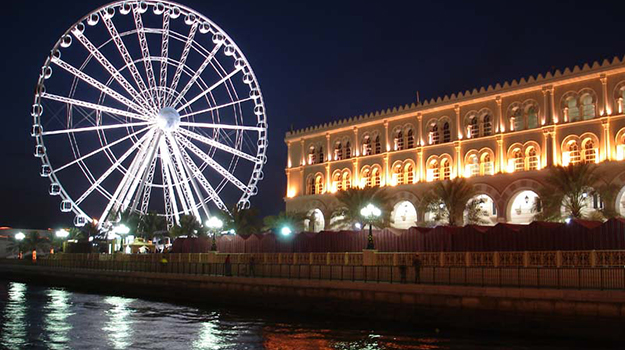
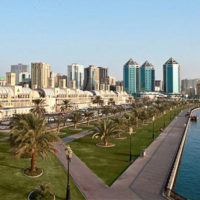
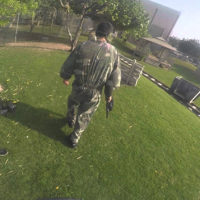
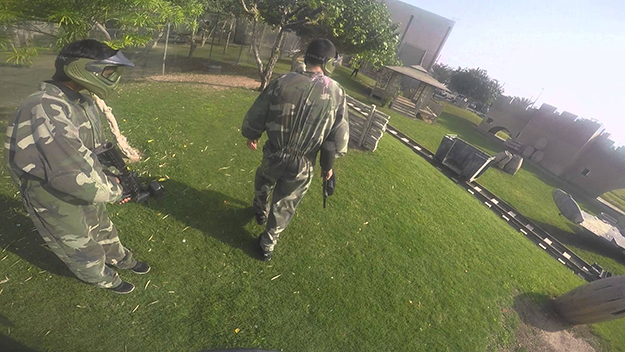

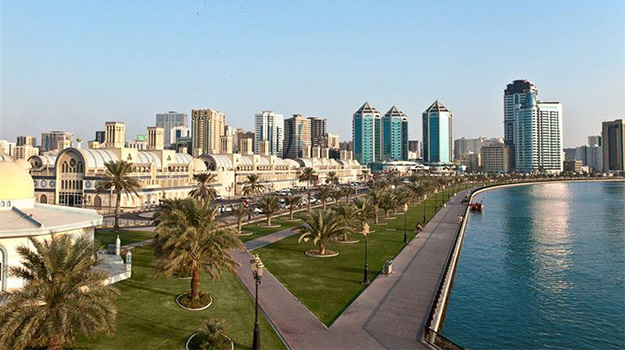
Great really attractive places thank you for sharing